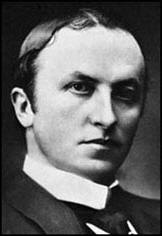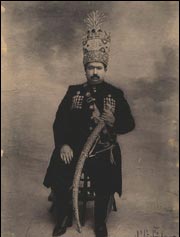|
||||||
|
Archive: Nov. 7 12 21 25 |
November 18th |
|||||
|
On this day (Nov 18) in the year of 1907 the newly opened Duma (Russian
Parliament) received a report from Isvolsky, the Russian minister for foreign
affairs about the division of Iran, our beloved homeland, an independent and a
long time mighty empire. On August 31, 1907 in St. Petersburg, the Anglo-Russian Convention on Iran, Afghanistan and Tibet were signed aligning Russian with England and France against the Central Powers. This was a very sad and dark day in our entire history; because we lost our independence and integrity without fighting a war, even we were not aware of this dirty conspiracy. This ugly England and Russian plot concluded after a year of secret discussion arranged and brokered by the government of France. Frances's fear of isolation at the hand of Germany, Austria-Hungary and Italy caused her to try hard to get Russian and England to solve the existing problems between themselves on Iran, Afghanistan and Tibet with any mean and any price. England also sought reconciliation with its inveterate enemy, Russia. The Anglo-Russian Convention settled their differences by establishing separate spheres of influence in Iran. With this agreement, the Triple Entente (Russian, France and England) was complete and France's fear of the Central Powers ended. The rivalry and hostility between these two alliances was the main origin of WWI. According to the Anglo-Russian Convention, Iran was divided in three spheres: the north and the northwestern part (from Qasr-e-Shirin to the Russian-Afghan border) adjacent to the Caucasus, was given to Russia; the southeastern section, bordering India including Birjand and Kerman was to be the English sphere and the central part remained neutral in between, and supposed that maintaining the noninterference section. The Russians relinquished Afghanistan as an English sphere of influence because it was a special interest of England. Tibet was recognized as belonging to China. Therefore the Anglo-Russian conflict of interests was virtually liquidated by the agreements of 1907. The Anglo-Russian Convention of 1907 got it goal as establishment of a military alliance in Europe but failed to build a basement for friendship or co-operation between the two governments. On August 31, 1907, a few hours after the Anglo-Russian Convention was singed and sealed in St. Petersburg, in Tehran the premier of Iran, Ali Asghar Khan Atabaack, on his way out of the Majlis was assassinated. The first Majlis, which came to life on October 7,1906 leaned toward England but the Shah was in favor with the Russians. The Majlis received a copy of the Anglo-Russian Convention on October 3, 1907 by Iran's minister for foreign affairs and rejected it immediately, but with no further action. This copy in the French language had been delivered by the embassy of England in Tehran to Iran's ministry of foreign affairs on September 23, 1907. The England and Russian divided Iran into protecting zones. England created an armed force, The South Persian Rifles or SPR, to protect its interests and Russian created the Cossacks in its sphere. The Shah, Mohammad Ali Qajar had in his command only a Russian officered brigade, which under Lyakhov bombarded the Majlis by cannon. Meanwhile England's policy of 'divide and rule' was at work. Under strong pressure from Russia, Tehran dismissed American W. Morgan Schuster as treasurer general of Iran on which his appointment was the recommendation of Taft, the US president. At the end of WWI, because of Russian's preoccupation with its own revolution, England was the dominant influence in Tehran. Lord Curzon, the foreign secretary of England proposed establishing an English protectorate over ran. The Iranian prime minister, Vosugh-ud-dowleh and two members of his cabinet who received a large financial inducement (bribe) from England supported the agreement, so- called 'Anglo-Iranian agreement of 1919' and Iran became the English protectorate for a period of time. But when on January 10, 1920 Iran became a member of the League of Nations, England recognized the independence of Iran Then, England for the continuation of his policy, especially with oil, discovered brigadier Reza Khan via Dickson, an English military man working in Tehran, and on February 20, 1921, Reza Khan with his troops marched into Tehran and seized power. Six days later on February 26, 1921, Lenin, the supreme leader of Russia recognized the territorial integrity of Iran, abolished all Russia's concessions including the Anglo-Russian Convention of 1907 and disarmed England. Because the oil of Iran was the main goal, on May 28, 1933 a new Anglo-Iranian agreement, which permitted England to extract oil from 250,000 square miles of land was signed but cancelled in 1950 by the people of Iran. |
||||||
|
||||||
|
||||||

